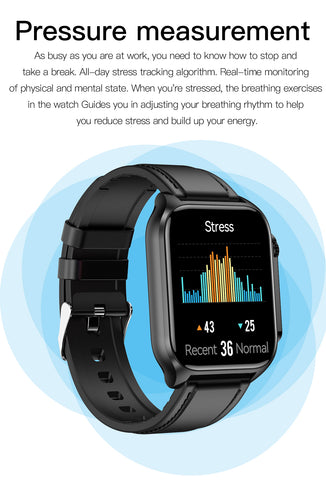The Rise of Wearable Technology: A Historical Perspective and Future Outlook
Wearable technology has rapidly evolved from a niche market to a mainstream phenomenon, integrating seamlessly into our daily lives. But why is wearable technology growing at such a remarkable pace? To understand this, we need to delve into its historical development, current trends, and future potential.
A Brief History of Wearable Technology
The concept of wearable technology dates back centuries. The earliest known wearable devices were eyeglasses, invented in the 13th century to aid vision. Fast forward to the 20th century, and we see the emergence of wristwatches, a significant milestone in the wearables industry. However, the real transformation began in the late 20th and early 21st centuries, driven by advancements in microelectronics and digital technology.
The 1980s and 1990s: The Foundation Years
The 1980s and 1990s laid the groundwork for modern wearable technology. The first digital watch, the Pulsar, was introduced in 1972, offering a glimpse of the potential for integrating technology into everyday accessories. In the 1980s, the advent of personal computers and the internet opened new possibilities for connectivity and miniaturization.
One of the notable early wearable devices was the calculator watch, popularized by brands like Casio. These watches combined timekeeping with basic computational functions, paving the way for more sophisticated multifunctional devices.
The 2000s: The Dawn of Smart Wearables
The 2000s marked the beginning of the smart wearables era. In 2004, the first Bluetooth headset hit the market, allowing for wireless communication. This period also saw the introduction of the first fitness trackers, like the Nike+iPod in 2006, which used sensors to track physical activity and provide feedback to users.
In 2008, Fitbit launched its first product, a simple clip-on device that tracked steps, distance, and calories burned. This was a game-changer, as it demonstrated the potential for wearables to monitor health and fitness metrics in real-time.
The 2010s: The Explosion of Wearable Technology
The 2010s witnessed an explosion in the popularity and diversity of wearable technology. The launch of the Apple Watch in 2015 was a pivotal moment, bringing smartwatch technology to the masses. The Apple Watch, with its sleek design, extensive app ecosystem, and robust health-tracking features, set a new standard for wearable devices.

During this decade, wearables diversified into various categories, including smartwatches, fitness trackers, smart glasses, and even smart clothing. Companies like Garmin, Samsung, BP Doctor, and Fitbit continued to innovate, incorporating features like heart rate monitoring, GPS tracking, and sleep analysis.
Why Wearable Technology is Growing
Several factors contribute to the rapid growth of wearable technology:
1. Health and Fitness Awareness
Increasing awareness of health and fitness has been a major driver of wearable technology adoption. Devices like fitness trackers and smartwatches provide users with real-time data on their physical activity, heart rate, sleep patterns, and more. This information empowers individuals to make informed decisions about their health and lifestyle.
2. Technological Advancements
Advancements in sensor technology, battery life, and connectivity have significantly enhanced the functionality and usability of wearable devices. Modern wearables are more accurate, reliable, and capable of performing a wide range of functions, from tracking vital signs to providing notifications and integrating with other smart devices.
3. Personalization and Customization
Wearable technology offers a high degree of personalization and customization. Users can choose from a variety of styles, features, and apps to suit their individual preferences and needs. This flexibility makes wearables appealing to a broad audience.
4. Integration with the Internet of Things (IoT)
The integration of wearable devices with the Internet of Things (IoT) has opened up new possibilities for connectivity and functionality. Wearables can now interact with other smart devices, creating a seamless and interconnected ecosystem. For example, a smartwatch can control smart home devices, monitor health data, and even make payments.
5. Corporate and Enterprise Use
Beyond personal use, wearable technology is gaining traction in corporate and enterprise settings. Companies are leveraging wearables for employee wellness programs, productivity tracking, and safety monitoring. For instance, wearables can monitor workers' health in hazardous environments or track their movements to improve efficiency.

The Future of Wearable Technology
The future of wearable technology looks promising, with continued innovation and expansion into new areas. Some potential developments include:
1. Advanced Health Monitoring
Wearables are expected to play a significant role in advanced health monitoring and disease management. Future devices could offer more sophisticated biometric sensors, capable of detecting early signs of illnesses and providing real-time health insights.
2. Augmented Reality (AR) and Virtual Reality (VR)
AR and VR are poised to revolutionize wearable technology. Smart glasses and headsets equipped with AR and VR capabilities could enhance various aspects of life, from gaming and entertainment to education and professional training.
3. Smart Fabrics and Clothing
Smart fabrics and clothing represent an exciting frontier in wearable technology. Integrating sensors and electronics into textiles could lead to clothing that monitors health metrics, adjusts to environmental conditions, and even communicates with other devices.
4. Improved Battery Life and Energy Harvesting
Advancements in battery technology and energy harvesting will address one of the major limitations of current wearables: battery life. Future devices could feature longer-lasting batteries and the ability to generate power from the wearer's movements or environmental sources.
Conclusion
The growth of wearable technology is a testament to the relentless pace of innovation and the increasing demand for seamless integration of technology into our daily lives. From its humble beginnings with eyeglasses and wristwatches to the sophisticated smartwatches and fitness trackers of today, wearable technology has come a long way. As we look to the future, it's clear that wearables will continue to evolve, offering new possibilities for health monitoring, connectivity, and personal empowerment. The journey of wearable technology is just beginning, and the best is yet to come.









